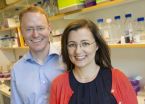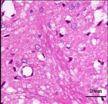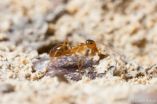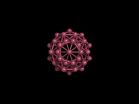(Press-News.org) China's richest provinces have an outsized environmental impact on the country's water-scarce regions, according to new research from the International Institute for Applied Systems Analysis (IIASA) and the University of Maryland.
Many developed regions in China are not only drawing from their own water resources but also contributing to water depletion in other water-scarce regions of the country through imports of food and other water-intensive goods, according to the new study published in the journal Environmental Science & Technology. This has environmental impacts and potential future impacts on water availability for the entire country.
The new study used the concept of "virtual water," an economic concept used to track water flows through trade, to track how water is traded through agricultural products and other goods that require water to produce. But while previous studies of water flows had treated all water equally, the new study accounts for water scarcity.
"When goods and services are exchanged, so is virtual water," explains IIASA and University of Maryland researcher Laixiang Sun, a study co-author. "For example, it takes about 1,600 cubic meters of actual water to produce one metric ton of wheat. When a country or region imports a ton of wheat instead of producing it domestically, it saves most of that."
In China, water resources are distributed unevenly, with ample water in the wealthier southern region, and scarce water in most northern provinces. The study shows that trade between these water-scarce regions tends to draw more sharply on water resources in the less developed, poorer regions. For example, the provinces of Shanghai, Shandong, Beijing, and Tianjin import large amounts of virtual water at the expense of less-developed provinces such as Xinjiang, Inner Mongolia, and Hebei.
"Importing water-intensive goods from one water-scarce region to another doesn't solve the problem of water scarcity—it just shifts the pressure to other regions," says co-author Klaus Hubacek, a researcher at the University of Maryland and an alumnus of the IIASA Young Scientists Summer Program.
The study also examined the impact of international exports on water resources, showing that production of international exports in China's top exporting regions also draws on water resources in water-scarce northern provinces.
Sun adds, "With the fast growth of China's economy, and increasing urbanization, this trend is likely to continue in the next few decades."
Recognizing the problem of water scarcity, China has launched a multi-billion dollar water transfer project to divert water from the South to the North. But the authors suggest that replacing imports from the North with goods produced in the South could be a more efficient solution to the problem.
The researchers say that their new study lays the groundwork for smarter water resource management. Says Sun, "This is the first study that incorporates water consumption, water scarcity, and ecosystem impacts into an analysis that conveys the pressures on water resources. Using virtual water as a policy tool only makes sense if you take water scarcity into account."
INFORMATION:
Reference
Feng, Kuishuang, Klaus Hubacek, Stephan Pfister, Yang Yu, Laixiang Sun. 2014. "Virtual Scarce Water in China." Environmental Science and Technology, http://dx.doi.org/10.1021/es500502q.
For more information contact:
Laixiang Sun
IIASA Senior Research Scholar
Water Program
+43(0) 2236 807 543
sun@iiasa.ac.at
Klaus Hubacek
University of Maryland
+1 301-405-4567
hubacek@umd.edu
Katherine Leitzell
IIASA Press Office
Tel: +43 2236 807 316
Mob: +43 676 83 807 316
leitzell@iiasa.ac.at
China's hidden water footprint
2014-07-07
ELSE PRESS RELEASES FROM THIS DATE:
DNA origami nano-tool provides important clue to cancer
2014-07-07
Researchers at Karolinska Institutet in Sweden have headed a study that provides new knowledge about the EphA2 receptor, which is significant in several forms of cancer. This is important knowledge in itself – but just as important is how this study, which is published in the highly respected journal Nature Methods, was conducted. The researchers used the method of DNA origami, in which a DNA molecule is shaped into a nanostructure, and used these structures to test theories about cell signalling.
It was previously known that the EphA2 receptor played a part in several ...
Dental pulp stem cells promote the survival and regeneration of retinal cells after injury
2014-07-07
Researchers at the University of Birmingham, UK, led by Dr. Ben Scheven, Dr. Wendy Leadbeater and Ben Mead have discovered that stem cells isolated from the teeth, termed dental pulp stem cells (DPSC), can protect retinal ganglion cells (RGCs) from death following injury and promote regeneration of their axons along the optic nerve.
RGC loss is the leading cause of blindness and can arise through traumatic injury or degenerative diseases such as glaucoma. Neurotrophic factors (NTFs), which travel along the axon of a neuron to a cell body act as survival signals however, ...
Houshiheisan maintains stabilization of the internal environment of neurovascular units
2014-07-07
Cerebral ischemia not only injuries neurons, but also involves the glial cells that provide a supportive scaffold to which the neurons are attached and the microvessels that provide energy for nervous tissue. Therefore, protection of a single neuron is not sufficient to recover nervous function, and more attention should be paid to maintenance of the function of entire neurovascular units. Houshiheisan compound is one of effective traditional Chinese compound prescriptions for stroke. The prescription is composed of wind-dispelling (chrysanthemun flower, divaricate saposhnikovia ...
Ultra-cold atom transport made simple
2014-07-07
Techniques for controlling ultra-cold atoms travelling in ring traps currently represent an important research area in physics. A new study gives a proof of principle, confirmed by numerical simulations, of the applicability to ultra-cold atoms of a very efficient and robust transport technique called spatial adiabatic passage (SAP). Yu Loiko from the University of Barcelona, Spain, and colleagues have, for the first time, applied SAP to inject, extract, and filter the velocity of neutral atoms from and into a ring trap. Such traps are key to improving our understanding ...
Science and cookies: Researchers tap into citizen science to shed light on ant diversity
2014-07-07
Scientists from North Carolina State University and the University of Florida have combined cookies, citizen science and robust research methods to track the diversity of ant species across the United States, and are now collaborating with international partners to get a global perspective on how ants are moving and surviving in the modern world.
"We think our School of Ants project serves as a good model for how citizen science can be used to collect more data, more quickly, from more places than a research team could do otherwise," says Dr. Andrea Lucky, a researcher ...
Concern at lack of teenage patients in cancer trials
2014-07-07
Age limits on clinical trials need to be more flexible to allow more teenage cancer patients the chance to access new treatments, according to a report from the National Cancer Research Institute (NCRI), published in the Lancet Oncology.
The study, funded by the National Institute for Health Research and Teenage Cancer Trust, found that trials designed with broader age limits resulted in more teenagers and young adults going on clinical trials.
The study showed this recommendation led to a 13 per cent rise in 15-19 year old cancer patients taking part in clinical trials ...
Sutures or staples? The best choice for closing a C-section
2014-07-07
(PHILADELPHIA) -- In the largest study to date comparing sutures (stitches) versus surgical staples for closing a C-section, researchers found a 57 percent decrease in wound complications in women who were sutured versus those who received staples. By carefully addressing the concerns that previous studies had raised, the research shows a clear benefit of suture for women.
"There has been ongoing debate in the field about the use of sutures versus staples," says senior author Vincenzo Berghella, M.D., director of Maternal Fetal Medicine in the Department of Obstetrics ...
Low-cost TB test means quicker, more reliable diagnosis for patients
2014-07-07
(BRYAN, Texas) — A new test for tuberculosis (TB) could dramatically improve the speed and accuracy of diagnosis for one of the world's deadliest diseases, enabling health care providers to report results to patients within minutes, according to a study published this week in the journal Angewandte Chemie.
Jeffrey Cirillo, Ph.D., professor at the Texas A&M Health Science Center College of Medicine, in collaboration with GBDbio, a Texas A&M spinoff company, and investigators at Stanford University, have identified a new chemical compound to spot the bacteria that cause ...
Platonic solids generate their 4-dimensional analogues
2014-07-07
Alicia Boole Stott, the third daughter of mathematician George Boole, is probably best known for establishing the term "polytope" for a convex solid in four dimensions. Alicia was also a long time collaborator of HSM Coxeter, one of the greatest geometers of the 20th Century.
Platonic solids are regular bodies in three dimensions, such as the cube and icosahedron, and have been known for millennia. They feature prominently in the natural world wherever geometry and symmetry are important, for instance in lattices and quasi-crystals, as well as fullerenes and viruses (see ...
Scientists find important piece in the brain tumor puzzle
2014-07-07
This news release is available in French. Scientists at the Montreal Neurological Institute and Hospital, McGill University and McGill University Health Centre have shown that a member of the protein family known as SUMO (small ubiquitin-like modifier) is a key to why tumour cells multiply uncontrollably, especially in the case of glioblastoma. The SUMO family proteins modify other proteins and the SUMOylation of proteins are critical for many cellular processes. Identifying SUMO's role in the cancer cell growth will lead to a new strategy for glioblastoma treatment. ...



